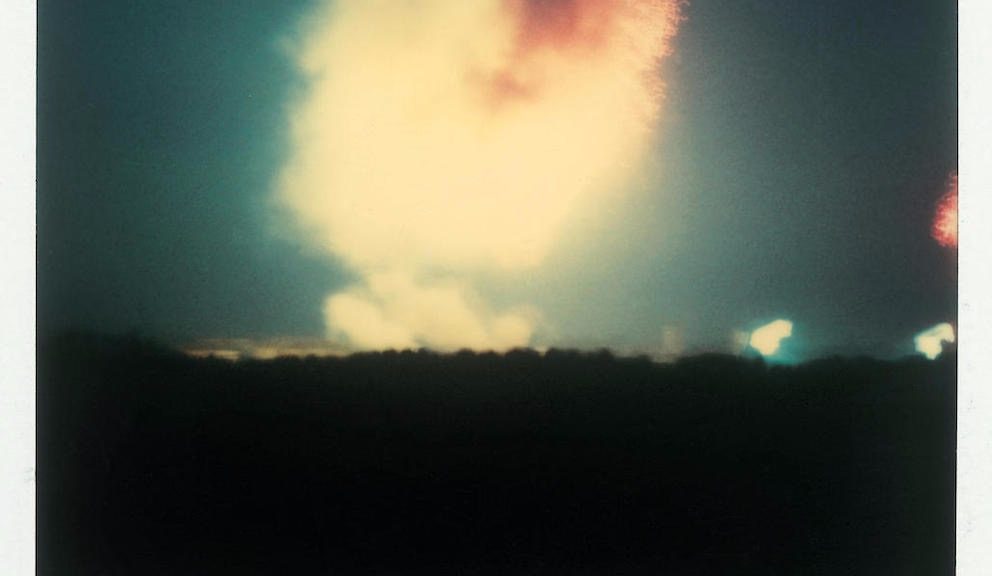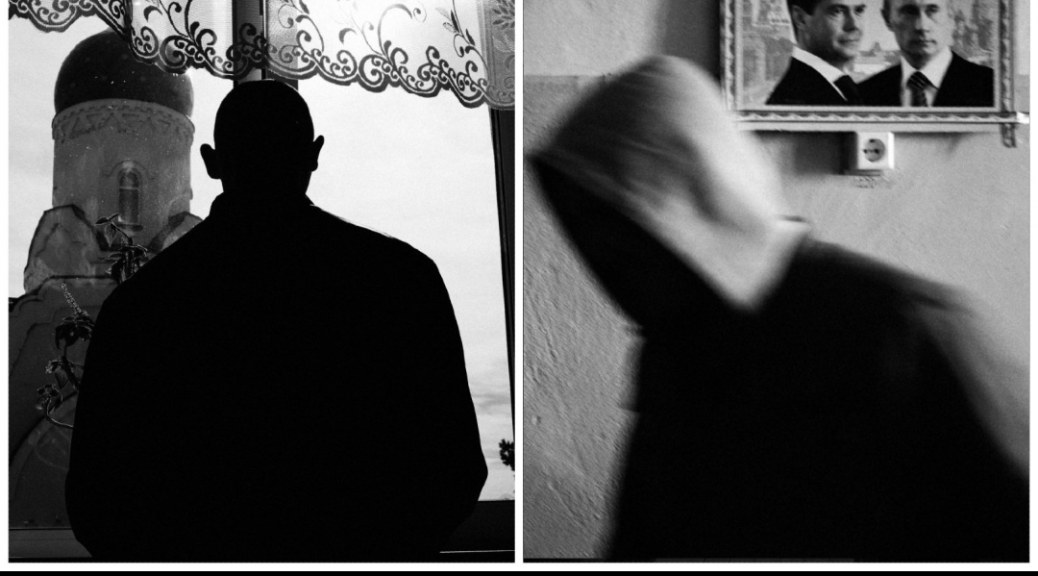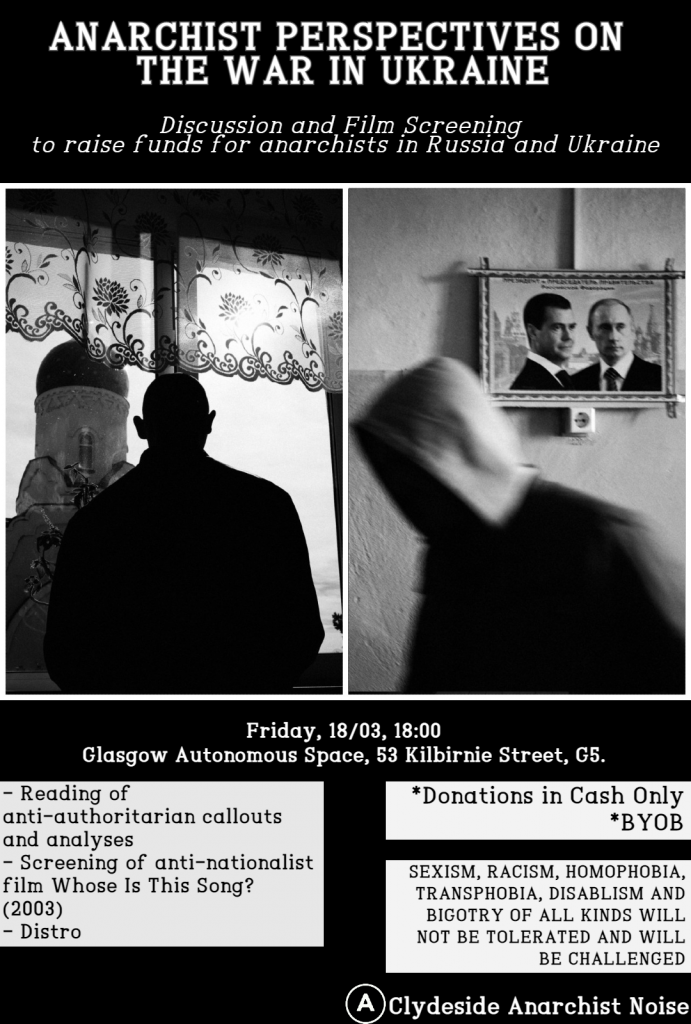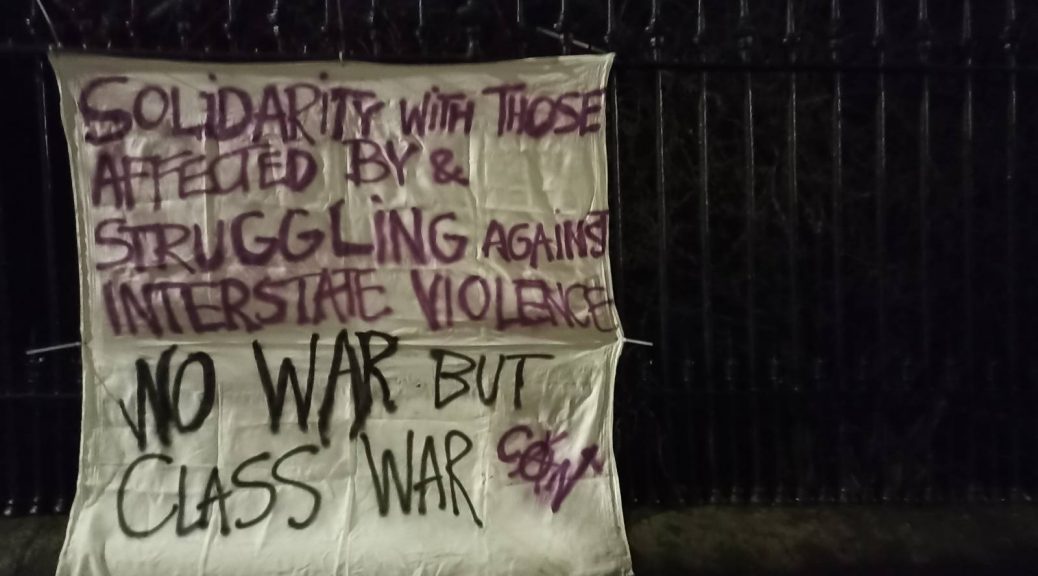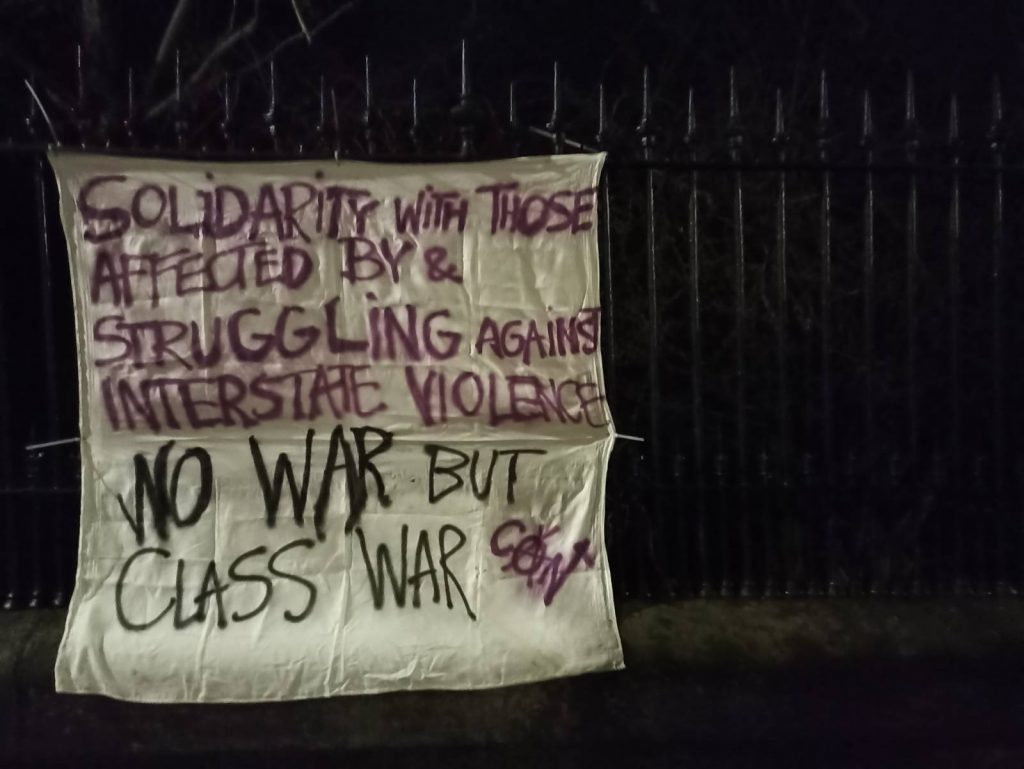In this context, one of the basic arguments of the Russian propaganda line and reasoning behind the invasion, that of a fascist regime in Ukraine, cannot be justified only on the basis of the national Ukrainian idea. A fascist regime would also need to have something more than far-right volunteer groups which are recruited by and fight alongside the state at a time of war. What would be needed would be a deep, institutional and social transformation which would abolish any form of representation, any form of judicial power and any form of elections, and also would have to be accompanied by a stable and organised ethnic cleansing.
As for these conditions, the only one that has seen the light of the public sphere has been the last, which, apart from Russian claims, is still awaiting public confirmation. The argument that a genocide is taking place in Donbass comes from speeches by the president of the Russian Federation himself. Even there, the language he uses is very diplomatic, stating that “the situation is reminiscent of genocide”. This is a formulation that is extremely careful, both at the diplomatic level, and also in the creation of impressions. From this statement onwards, on the 15th of February 2022, hundreds of posts appeared that spoke of 14,000, 16,000 or even 200,000 dead(!). There is no doubt that Ukraine has repeatedly violated the Minsk agreement, and that it has exerted armed pressure on the breakaway regions. But it remains to be proven internationally that, besides the military clashes on a local level, and beyond the confirmed repulsions of the Russian-speaking rural population towards Russia, which essentially never stopped, that an organised genocide was conducted, with thousands of victims. These operations are carried out by battalions of the Ukrainian army, but it is unknown who and where exactly. It is a certain fact, however, that Azov and Aidar, now battalions of the Ukrainian army, also took part in these purges in their founding acts within the Ukrainian neo-nazi far-right. It is almost certain that these battalions are operating “uncontrollably”, and Amnesty International has gathered significant evidence on their actions until 2016, at least in the active phase of the war. The Azov and Aidar battalions tried to gain electoral prominence, and therefore state coverage, by having a joint parliamentary presence in the “Patriots of Ukraine” party. Their neonazi ideology and consequently its aims, were so far from the Ukrainian national narrative that in 2019 they received 2.15% of the vote and remained outside of parliament. This is another piece of evidence that the national ideology of Ukraine is a completely formal ideology, with itscontradictions and its authoritarian character, but one which is far from being simply “nazi”.
The integration of Azov into the Ukrainian army, the portrayal even in Western newspapers of the battalion as far-right and the consequent outcry, as well as the recurrent electoral failures of the far-right in Ukraine, led to something much more interesting, and politically dangerous, which the rhetoric about a “fascist state” or a “fascist battalion” completely underestimates. Azov was transformed into a mercenary company with soldiers on contract, which is currently being leased by the Ukrainian state. This is the first confirmed case of a mercenary army funded by a Ministry of Defence on European grounds, and, as there was no precedent for something like this, it provoked reactions even within the Ukrainian defence ministry. The structure of Azov, and its relationship with the Ukrainian state, is as important as its ideological colouring. And while the integration of the far right into the military is not a new phenomenon, their integration as mercenaries is a new, qualitative upgrade that allows both themselves, and the state itself, to move within questionable legal waters and command mechanisms. The effects of this phenomenon are yet to be seen, but they will most certainly exist. It is most likely that Azov will develop into a far-right mercenary company, which will be essentially de-nationalised from the Ukrainian state, and therefore available for hire by equivalent large clients, by states or businessmen. It is worth noting that it is in response to all of this that the Russian leadership mobilised beyond the regular army, which is not lacking in numbers, also using paramilitary, openly extreme Islamist groups led by Kadyrov and other Chechen far-rightists, to attack Ukraine. Also, perhaps, not coincidentally, Kadyrov appears to have clashed directly with the Azov Battalion in Eastern Ukraine. It was the only mass, and also legally ambiguous, military entity on the Russian side that could compete with Azov, both ideologically and militarily, in a form of “hybrid warfare”.
As for the genocide, however, the fact remains that regional data does not support such a thing, nor does the data of Amnesty International: shortly before the current war, Russian leadership recognised the products of Donbass as duty-free for the Russian Federation, products that could be exported as “made in Russia” and provided them with import-export codes, as well as investment programs from its central bank. In response, Zelensky pursued policies of re-establishing the “Donbass special economic zone”, that has failed since 2005, in an attempt to attract capital and investments. It goes without saying that, if there was a genocide, and such a large-scale military operation were taking place, any discussion of investment and productive activity would be unthinkable. On the contrary, the proposals both show that, within the breakaway regions, but also in the wider region of Eastern Ukraine, which remained under Ukrainian control, a “relatively stable” situation prevailed in the various regions, allowing for economic activity and planning.
Nevertheless, around the internet (mainly the social media sites of Facebook and Twitter), the acceptance that genocide is being carried out in the East by fascist battalions with exotic names spread like lightning. Perhaps it is better to assess the situation from the official evaluations of the Russian Federation about the situation in the East, which, before the war, were submitted to the UN. According to these estimates, from 2014 to 2022, Russia officially approximates that, in Eastern Ukraine, 2.6 thousand civilians of Russian origin have been killed by Ukrainian fire. There has been a total of 10 thousand deaths of fighters on both sides, deaths which are split about 50-50 between Ukrainian soldiers and Russian separatists. As expected, slightly higher (5,650) came from the Russian side. The vast majority of the dead come from the period 2014-2016, during the most active phase of the war, the so-called “Ukrainian Counter-Terrorist Operation”, with the casualties falling significantly in the next period. Together, they make up about 14,000, the number that was spread on the internet, but that includes civilian and military casualties from both sides (for reasons that escape me, the Russian side gives fewer deaths than the UN, with the difference being large, about 600 people). This is why the UN, while accepting Russia’s claim of casualties, refused to call it genocide. In order to understand the magnitude of the deaths in relation to the severity of a conflict (and how a number was spread without any critical analysis of confirmation, but was spread in the context of the informational war and became immediately credible for specific reasons), at the time of writing (28/02/2022), with full-scale war in Ukraine, the official civilian casualties throughout the country come to about 400 people. Reliable sources for military casualties on both sides are not yet available.
Given the above, and seeing how far the official information that states are forced to release differs from what is circulating the internet, it is necessary to identify a few points, which concern Western as much as Eastern propaganda. The conflict between Russia and Ukraine is multifactorial, and does not allow for clear assessments. The accusations surrounding a fascist state in Ukraine, when they are not based on exotic narratives of numerous fascist battalions operating in the deep Ukrainian East, are based on the fact that the Communist Party of Ukraine was barred from running in the 2019 elections. These accusations are analogous – ironically – with those accusing Russia of fascism. Nevertheless, banning the Communist Party from electoral participation, an undoubtedly anti-democratic and anti-communist act, is an act which has a long tradition and legal precedent in nearly all countries of Eastern Europe. In Russia, in the last decade, a number of parties have been excluded from elections, not necessarily of a right-wing or liberal tendency, but also from the milieus of the far-right and far-left, usually with bureaucratic excuses. This tactic, which usually comes from a logic of the use of the state apparatus as a tool by each respective government, has both populist-democratic and authoritarian characteristics. In this regard, Western rhetoric and propaganda is utterly hypocritical in accusing Russia of fascism or lack of democracy, while applauding the Ukrainian government for democracy when, broadly, the two countries treat their electoral legislation in a similar way. The only difference between them is that in Russia, the governing bloc is much more concentrated around the United Russia Party, and its military-industrial complex, while in Ukraine, as a smaller and more politically and economically heterogeneous country, there is an alternation of central and right-wing parties, with similar policies.
These policies, as far as the cultural-ethnic part is concerned, have nothing to do with what is usually referred to as “Russian hunting” or “language banning”. What has indeed been done, and is undoubtedly a step in the process of a stronger ethnogenesis, is to urge the media to use more Ukrainian than Russian, while at the same time the first intellectuals to speak of a “nation with two languages” have appeared. The integration of far-right groups into the regular Ukrainian army and security forces, those groups that wanted to remain loyal to the state, was expected, and not unprecedented. Now of course, it has special, technical characteristics when it comes to each individual state. However, similar examples exist in the USA, Germany, Russia, Greece and many Balkan countries. Obviously, none of these countries was described as “fascist”. As for those far-rightists who refused to accept their role in the security forces and had greater ambitions, in both Russia and Ukraine, the usual fate awaited them: imprisonment, judicial exhaustion and marginalisation.
